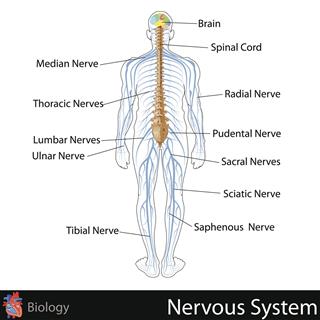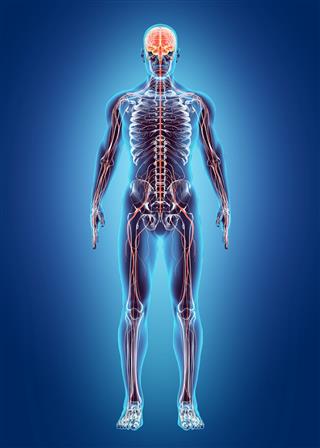
The sympathetic and parasympathetic systems are a part of the peripheral nervous system. Here, we explain the differences between them.
The sympathetic and parasympathetic systems together are a part of the nervous system. They act in tandem to maintain a state of homeostasis in the body. Before we go on to understand the various responses and effects of these two systems, we need to understand where these two systems originate from.
The nervous system is divided into the central nervous system (consisting of the brain and the spinal cord) and the peripheral nervous system (consisting of nerve branches arising from the brain and spinal cord). The peripheral nervous system is further divided into the somatic and autonomic system. It is the autonomic nervous system that is divided into the sympathetic and parasympathetic nervous system.
Sympathetic Nervous System
The sympathetic nervous system is one of the parts of the peripheral nervous system. The sympathetic nerves originate in the vertebrate column beginning in the first thoracic segment of the spinal cord, extending upwards until the second or the third lumbar segments. The main function of the sympathetic nervous system is to mobilize the body’s response under stressful circumstances. Thus, the sympathetic nervous system initializes the ‘fight or flight’ response of the body. The sympathetic system innervates many different organs of the body, such as the eyes, lungs, kidneys, gastrointestinal tract, heart, etc. It causes an increase in the heart rate and in the rate of secretions. It also increases the secretion of renin from the kidneys. There is also stimulation of release of glucose from the liver, which is released into the blood, so as to make it available for use by the body.
Parasympathetic Nervous System
The parasympathetic nervous system is a division of the autonomic nervous system. This is a part of the autonomic nervous system that is responsible for the ‘rest and digest’ phase of the body. The nerves of this system send fibers to cardiac muscles, smooth muscles, and to the glandular tissue. The parasympathetic nervous system is responsible for bringing about an increase in salivation, tear production, urination, digestion, and defecation. The basic parasympathetic system involves functions and actions that do not require an immediate reaction in the surrounding.
Difference Between Sympathetic and Parasympathetic System
There are many differences that exist, as these two systems act in an opposing manner.
Parasympathetic Nervous System: Constriction of pupils
Sympathetic Nervous System: Dilation of pupils
Parasympathetic Nervous System: Stimulation of secretion of saliva
Sympathetic Nervous System: Inhibition of secretion of saliva
Parasympathetic Nervous System: Decreases the heart rate, thus, causing a drop in the blood pressure
Sympathetic Nervous System: Increases the heart rate, thus, causing an increase in the blood pressure
Parasympathetic Nervous System: Constricts the bronchi, thus, decreasing the diameter of airway
Sympathetic Nervous System: Dilates the bronchi, thus, increasing the diameter of airway
Parasympathetic Nervous System: Stimulates activity of digestive system, like stimulation of peristalsis
Sympathetic Nervous System: Inhibits activity of the digestive system, like inhibition of peristalsis
Parasympathetic Nervous System: Stimulates gallbladder secretions
Sympathetic Nervous System: Decreases gallbladder secretions
Parasympathetic Nervous System: Contracts urinary bladder
Sympathetic Nervous System: Relaxes urinary bladder
Parasympathetic Nervous System: Relaxes rectum
Sympathetic Nervous System: Contracts rectum
Thus, as can be inferred from the above-given table, the responses and effects of both the systems are complementary in nature, rather than being antagonistic. The sympathetic division acts as the accelerator and the parasympathetic division acts as a decelerator of the human body. Thus, these two systems try to maintain the body in a normal state of homeostasis for the maximum possible time. At a time, only one of the two systems are activated in the body depending on the type of innervation brought about and the hormones released.




